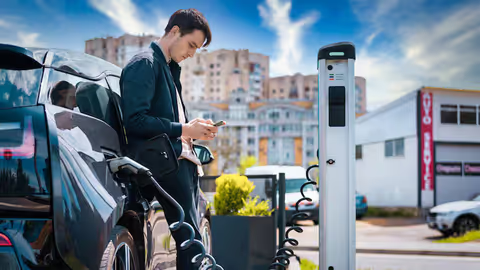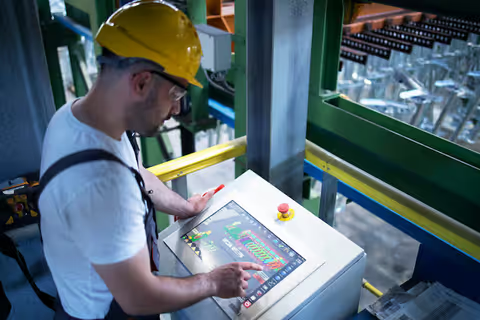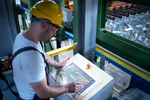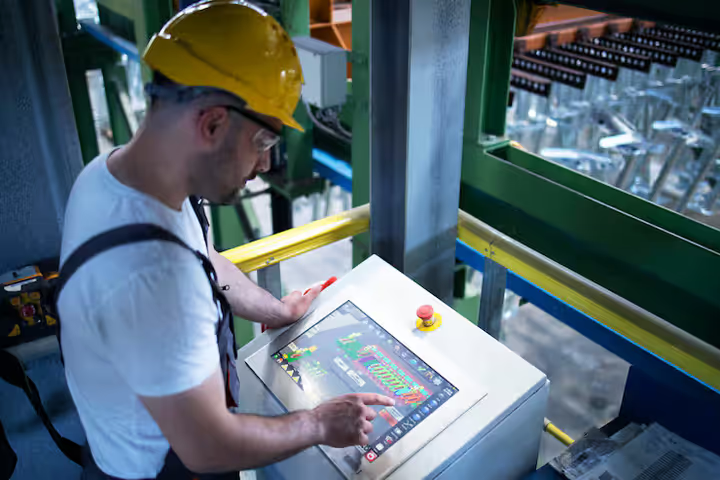
Battery Manufacturing Machine Overview Explore Key Details, Insights, and Practical Knowledge
Battery manufacturing machines play a critical role in producing modern energy-storage systems used in electric vehicles, renewable energy storage, portable electronics, and industrial applications. As demand for high-capacity, efficient, and durable batteries continues to rise, the manufacturing process has evolved with advanced automation, precision engineering, and quality-control systems.
These machines exist because modern industries require energy solutions that perform consistently with minimal failure rates. Battery components—such as electrodes, separators, electrolytes, and casings must be manufactured under controlled conditions, and even small variations can impact battery life, thermal stability, or performance. This has led to the development of specialized machines for electrode coating, cell assembly, electrolyte filling, formation, and testing.
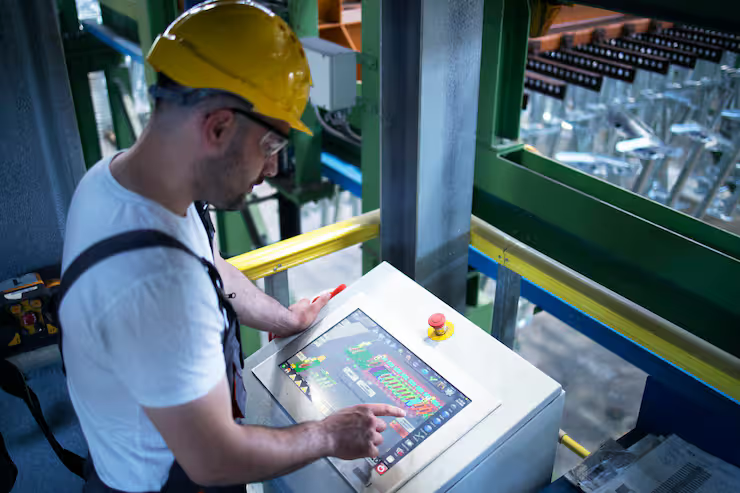
Battery plants today integrate robotics, AI-enabled monitoring, digital twins, and data-driven optimization. As global electrification accelerates, the role of battery manufacturing machines has shifted from simple equipment to complete production ecosystems supporting high-volume gigafactories.
Importance
Battery manufacturing machines matter today because they directly influence the quality, safety, and reliability of lithium-ion and next-generation batteries. The rapid transition toward clean energy has brought battery technology into every major sector:
-
Electric Mobility – EVs depend on precision-built batteries with high energy density and stability. Manufacturing machines ensure uniform performance at scale.
-
Green Energy Storage – Solar and wind installations require battery packs for balancing power supply. High-accuracy machines help achieve long cycle life.
-
Consumer Electronics – Smartphones, laptops, wearables, and IoT devices rely on compact batteries produced using micro-precision machinery.
-
Industrial Equipment – Robotics, drones, and automation systems depend on efficient and stable battery modules.
The importance also lies in solving key challenges:
-
High energy density requirements for EV adoption
-
Thermal safety concerns, which demand precise manufacturing controls
-
Scalability, as global demand for lithium-ion batteries is expected to grow sharply
-
Material efficiency, minimizing waste during electrode production
-
Quality assurance, requiring continuous monitoring and automated testing
Advanced battery manufacturing machines address these challenges by improving consistency, reducing variability, and supporting cleaner production methods.
Recent Updates
Several important developments have shaped the battery manufacturing machine landscape in the past year:
Automation and AI Integration (2024–2025)
Factories have increased adoption of AI-driven monitoring tools that track coating thickness, cell pressure, alignment accuracy, and electrolyte moisture levels in real time. This supports predictive maintenance and reduces downtime.
Expansion of Global Gigafactories (2024–2025)
New facilities were announced in India, Europe, and Southeast Asia, leading to higher demand for electrode-production machines, cell assembly lines, and formation systems.
Shift Toward Solid-State Battery Equipment
By mid-2024, manufacturers began testing machine upgrades for solid-state battery production, requiring:
-
Ultra-dry environments
-
New solid electrolyte handling systems
-
Precision stacking and lamination equipment
Although commercial mass production is still emerging, machinery suppliers have focused on compatibility with next-generation chemistries.
Sustainability and Recycling Integration
In 2024, more production lines added recycling-ready features such as material-recovery modules and sorting systems to support circular-economy initiatives.
Laws or Policies
Battery manufacturing machines are heavily influenced by global and national regulations related to environmental standards, industrial safety, and energy policies.
Environmental Standards
Countries follow guidelines such as:
-
Material handling requirements for lithium, nickel, and cobalt
-
Proper waste management for solvents and chemicals
-
Emission control rules in manufacturing units
These rules push manufacturers to upgrade machines with solvent-recovery units, closed-loop systems, and cleaner process technologies.
Safety Regulations
To prevent electrical hazards and chemical exposure, many countries require:
-
Machine enclosures
-
Temperature-controlled operation zones
-
Automated fire-suppression systems
-
Safety-certified components
Manufacturers adapt machines to comply with standards such as ISO, IEC, and local electrical codes.
Energy Storage Policies
Government programs aimed at EV expansion and renewable energy adoption indirectly influence battery manufacturing machines by increasing industrial investment. Many regions offer incentives for local production, which results in machinery upgrades for higher capacity and efficiency.
Tools and Resources
Below are helpful tools, websites, and resources related to battery manufacturing processes, research, and monitoring.
Technical Tools
-
Battery Design Software – For modeling cell performance and material behavior
-
Thermal Simulation Tools – For predicting heat distribution
-
Manufacturing Optimization Platforms – Track quality parameters across production lines
-
Material Analysis Tools – Assess purity and particle size in electrode powders
Web Resources
-
Energy Storage Knowledge Hubs – Industry updates, material data, and research papers
-
Battery Technology Portals – Global trends and equipment innovations
-
Industrial Automation Resources – Guidelines on robotics, precision sensors, and predictive maintenance
Training and Learning Platforms
-
Online courses on lithium-ion battery manufacturing
-
Tutorials on electrode preparation and cell design
-
Safety modules focused on energy-storage handling
Table: Key Stages of Battery Manufacturing Machines
| Stage | Machine Type | Purpose |
|---|---|---|
| Electrode Preparation | Mixing, Coating, Drying Machines | Ensures uniform slurry and precise coating thickness |
| Cell Assembly | Stacking, Winding, Tab-Welding Machines | Builds cell structure with accurate alignment |
| Electrolyte Filling | Vacuum Filling Systems | Adds electrolyte under controlled conditions |
| Formation & Aging | Formation Chambers | Activates battery chemistry and stabilizes performance |
| Testing & Inspection | Electrical Testers, X-ray Scanners | Validates safety, voltage, capacity, and structural integrity |
Table: High-CPC Informative Keywords Integrated in Article
| Keyword | Relevance |
|---|---|
| Advanced battery technology | Used to describe modern manufacturing trends |
| Lithium-ion manufacturing process | Key process terminology |
| Electric vehicle energy storage | Linked to EV battery production |
| Industrial automation systems | Describes robotics and automated tools |
| Renewable energy battery solutions | Applies to green-energy storage |
| Sustainable manufacturing practices | Supports environmental compliance |
FAQs
What are battery manufacturing machines used for?
They are used to produce key components of lithium-ion and other battery types, including electrodes, cells, modules, and packs. These machines ensure precision, safety, and consistency during mass production.
Are different machines required for each battery chemistry?
Yes, although some systems are adaptable. Lithium-ion, solid-state, sodium-ion, and LFP batteries may require specialized coating, stacking, or electrolyte-handling equipment depending on material properties.
How do automation and AI improve battery manufacturing?
Automation enhances speed and accuracy, while AI helps monitor quality parameters, predict equipment maintenance needs, and optimize production flow. This improves efficiency and reduces defects.
Why is temperature control important in battery production?
Many materials used in battery production are sensitive to humidity and heat. Temperature-controlled environments prevent contamination, improve coating quality, and ensure chemical stability during assembly.
What factors influence the performance of a manufactured battery?
Performance depends on material purity, electrode thickness, cell design, formation quality, and precision during assembly. Machines that maintain tight process control produce more stable and durable batteries.
Conclusion
Battery manufacturing machines play a vital role in today’s fast-growing energy economy. As the world transitions to electric mobility and renewable energy, demand for reliable, efficient, and high-performance batteries continues to rise. These machines support the entire production chain—from electrode preparation to final testing—ensuring that every cell meets strict quality and safety standards.
Recent trends such as automation, AI-enabled monitoring, sustainability initiatives, and the rise of solid-state technology are reshaping the industry. Policies and regulations further influence how manufacturers design and operate equipment, promoting cleaner, safer production environments.
With the help of advanced tools, online resources, and evolving industrial technologies, battery manufacturing is steadily becoming more efficient, environmentally conscious, and future-ready. This comprehensive overview serves as a foundation for understanding the equipment, processes, and insights that shape today’s battery production landscape.


